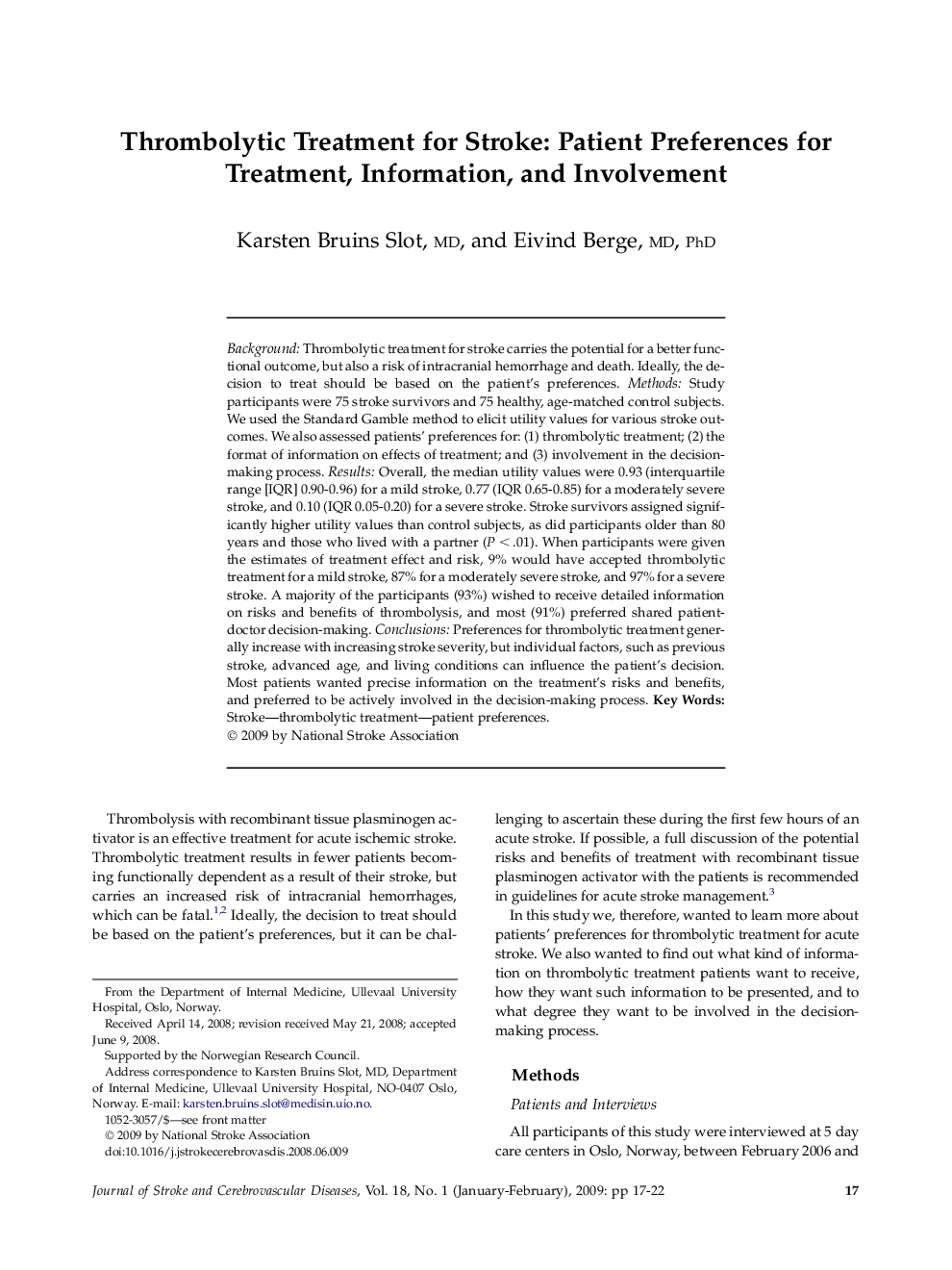| کد مقاله | کد نشریه | سال انتشار | مقاله انگلیسی | نسخه تمام متن |
|---|---|---|---|---|
| 2711766 | 1145050 | 2009 | 6 صفحه PDF | دانلود رایگان |

BackgroundThrombolytic treatment for stroke carries the potential for a better functional outcome, but also a risk of intracranial hemorrhage and death. Ideally, the decision to treat should be based on the patient's preferences.MethodsStudy participants were 75 stroke survivors and 75 healthy, age-matched control subjects. We used the Standard Gamble method to elicit utility values for various stroke outcomes. We also assessed patients' preferences for: (1) thrombolytic treatment; (2) the format of information on effects of treatment; and (3) involvement in the decision-making process.ResultsOverall, the median utility values were 0.93 (interquartile range [IQR] 0.90-0.96) for a mild stroke, 0.77 (IQR 0.65-0.85) for a moderately severe stroke, and 0.10 (IQR 0.05-0.20) for a severe stroke. Stroke survivors assigned significantly higher utility values than control subjects, as did participants older than 80 years and those who lived with a partner (P < .01). When participants were given the estimates of treatment effect and risk, 9% would have accepted thrombolytic treatment for a mild stroke, 87% for a moderately severe stroke, and 97% for a severe stroke. A majority of the participants (93%) wished to receive detailed information on risks and benefits of thrombolysis, and most (91%) preferred shared patient-doctor decision-making.ConclusionsPreferences for thrombolytic treatment generally increase with increasing stroke severity, but individual factors, such as previous stroke, advanced age, and living conditions can influence the patient's decision. Most patients wanted precise information on the treatment's risks and benefits, and preferred to be actively involved in the decision-making process.
Journal: Journal of Stroke and Cerebrovascular Diseases - Volume 18, Issue 1, January 2009, Pages 17–22